The Best Coffee Machines With Grinders in 2024
If you're familiar with how we think about coffee, you'll know that I believe key to finding your perfect brew is extraction. Typically, the easiest way to control extraction in a home environment is with temperature.
If you're coming from a brewing method like a French press, you'll be used to making sure you brew right off the boil for a medium to light roast coffee, and waiting ~30-60 seconds off the boil for a darker roast. And if you weren't aware of this; try it next time!
Your darker roasts should be less "harsh" and bitter with cooler water, and medium to lighter roasts should be more flavourful with bigger body with hotter water.
This is because the temperature of the water directly correlates to the extraction of the coffee, and darker roasts extract more easily than lighter roasts.
You might be aware there's also far more than temperature that affects extraction. The grind size, the amount of coffee you use, the time the water is in contact with the coffee, and the pressure of the water are all factors that affect extraction.
This is why espresso is so difficult to get right, as you're trying to control all of these factors at once.
The best coffee machines with grinders are designed to help you control these factors. They're a great investment if you're serious about your coffee, as they allow you to control all of the aforementioned key factors around extraction. Consistent extraction means consistent results every time, which is key to great coffee.

- What To Look For In a Coffee Machine With a Grinder?
- Coffee Machine vs Grinder: Which is More Important?
- How To Choose The Best Coffee Machine With a Grinder?
- Best Coffee Machines With Grinder? (Based on our independent reviews)
- What Are The Different Types Of Coffee Machines with Grinders?
- Espresso Coffee Machine with grinder
- Filter Coffee Machine with grinder
- Bean To Cup Coffee Machine with grinder
- Built In Coffee Machines with grinder
- Which Coffee Machine Will You Buy?
What To Look For In a Coffee Machine With a Grinder?
Price
The price of coffee machines with grinders can vary greatly. It's worth noting that coffee machines with grinder generally add a premium markup to the price compared to the machine's counterpart without a grinder.
For example, one of the most popular coffee machines with a grinder, the Sage Barista Express, retails for around £599. This is £200 more than the Sage Bambino Plus - the slimmer successor and counterpart to the Express - which retails typically for around £399.
Having said this, if you are purchasing a machine at this price point, you need to be grinding beans fresh to make the investment worth it.
In my opinion, it is not even worth considering machines at this price point without making the jump from pre-ground coffee to freshly ground.
So, if you already have a coffee grinder, remember that coffee machines with grinder are substantially more expensive because of the in-built grinder, so you should definitely consider a machine without one to save on the premium.
Grinder Type
When searching for the best coffee maker with a grinder, one of the most crucial factors to consider is the grinder type. The grinder directly affects the flavour and quality of your coffee, making it an essential feature to get right.
There are two types, namely Burr Grinders and Blade Grinders.
1. Burr Grinders: They crush coffee beans between two burrs (a piece of ceramic or metal shaped like a cone, with teeth), providing an easily adjustable and consistent grind size, which is key to dialling in perfect extraction.
Burr grinders come in two varieties: Flat burrs and conical burrs. Both offer precise control over the grind size, but conical burrs are often more typical likely due to availability and price (if I had to guess).
I have heard flat burrs being preferred for certain specialty coffee brewing methods as there will be a distinct flavour profile difference between the two, but it's worth noting that they are less common, especially when part of a wider machine like an espresso or filter machine with the grinder included.
All in all, these grinders are objectively superior to blade grinders when it comes to coffee.
2.
What you end up with is a mix of very fine coffee dust and large chunks, sometimes even half the size of the bean. This results in a cup of coffee which, whilst arguably "consistent", will produce a cup of coffee that is noticeably bitter and uneven in balance.
Bitter because there are far more "fines" (tiny dust-like particles) which will over-extract giving the coffee bitterness. Uneven in balance because the larger chunks will under-extract, giving the coffee a sour taste.
Having said this, theoretically, if you run the blade grinder with the exact same amount of beans by weight for the exact same amount of time, you could potentially get some level of consistency.
For this reason, Blade Grinders are objectively worse than Burr Grinders.
However, there are some scenarios where a blade grinder could be more appropriate. We will get to that a bit later.
When deciding on a grinder type, consider your budget and how much you value coffee quality. For those wondering "Is it worth buying an expensive coffee machine?", the answer often lies in the grinder.
Investing in a machine with a burr grinder can make a significant difference in your daily coffee experience.
Features
When choosing a coffee machine with a grinder, the features it offers can make a significant difference in both the brewing process and the final cup.
Here are some key features to consider:
Adjustable Grind Size: This is crucial for tailoring your coffee to your taste aka. "dialling in".
Different brewing methods require different grind sizes — broadly: espresso needs a fine grind, while a filter coffee brewer would benefit from a coarser grind.
A machine that allows you to adjust the grind size gives you the flexibility to experiment and find the perfect balance for your preferred brew.
Automation: I've always had a soft spot for Automatic Functionality, such as programmable timers and auto-start options. It can add amazing convenience to your morning routine.
These features allow you to set up your coffee machine the night before, ensuring a fresh cup of coffee is ready when you wake up.
Not all machines will have this, and in fact, a lot deliberately won't due to the semi-manual nature of the coffee-making operation. For example, most espresso makers will have no automated functionality, due to the fact you have to grind beans into the portafilter, then physically move and attach it in order to brew.
Temperature control: The right temperature is essential for extracting the best flavors from your coffee beans. Broadly speaking, coffee machines will rarely be hot enough.
Temperature management is always a battle. Manufacturers that realise this will add large markup to machines with precise (and high) temperature control because they know how essential it is.
Having said this, there is a lot you can do with machines that have less control, such as simply preheat several times before making the actual brew.
Milk Steam Wand: For those who enjoy milk-based coffee drinks, a Milk Steam Wand is a vital addition. You will typically see two types: a traditional steam wand and an automatic milk frother.
Ideally, I would always recommend the traditional one as whilst it has a bit of a learning curve, you will end up with absolute control over your milk temperature and texture.
Automatic ones can be good if you're not fussed about perfect milk texture for your coffee, so you be the judge!
When evaluating a coffee machine, consider how these features align with your preferences and daily routine to find the best match for your needs.
Longevity
To ensure the longevity of your coffee machine with a grinder, proper maintenance is key.
Using filtered water instead of tap water can significantly reduce mineral build-up, which can clog your machine and lead to costly repairs.
Regular descaling is also essential, as it prevents limescale from damaging the internal components. Additionally, keeping the grinder clean by regularly removing coffee residue will maintain its efficiency and extend its lifespan.
If this sounds like hard work, not to worry! I hate chores, and all of the recommendations in this article have easy / negligible maintenance requirements.
I personally descale my machine roughly once every 3 months, which is as easy as popping a tablet in and pressing a button.
Noise Levels
Whilst coffee machines are not inherently noisy, grinders certainly are. Unfortunately I don't have a huge amount of advice or recommendation in this category, because the fact is that grinders are simply noisy.
Burr grinders will be "quieter" (although still loud) than blade grinders, as blade grinders will generate the extra noise of the beans being thrown around the chamber.
I'm a particularly noise-sensitive individual, and I can honestly say that, although definitely loud, the noise of a grinder (in my opinion) is not something that bothers me - or, I've just gotten used to it by now.
Either way, it's worth considering if grinding your own coffee is right for you, either if you're particularly noise sensitive like me, or if you live with people who are going to get ticked off every time they hear it!
Ease of Use
When selecting a coffee machine with a grinder, it's important to remember that grinding is just the first step.
If you're more attracted to the idea of simply better tasting coffee thanks to freshly ground coffee beans, then you're going to want to lean more towards automatic bean to cup style machines.
However, if you're really interested in starting out espresso as a hobby, then machines like the Sage Barista Express are a great starting point - but just know that you're up against a learning curve.
Additional Factors To Consider
Clean up time
The theme throughout choosing a coffee machine with a grinder is that you're either looking at espresso or bean to cup style machines (which, no, is technically not espresso, but that's for a different article).
The cleanup routine for the machines vary, but generally bean to cup machines will only ever require you to empty the drip tray once in a while, and empty the coffee grounds container - both 5 second tasks.
Espresso machine cleanup routine is only slightly more involved, requiring you to knock the puck out of the portafilter, rinse the group head with a single-cup cycle, wipe the portafilter, and finally the steam wand (if you used it).
Either way, it's not a barrier to entry for either machine in my opinion. You should expect some level of basic maintenance and cleanup regardless of which machine you get.
Space requirements
Everyone's requirements will vary, but typically machines are no taller than about 40-50cms (15-20 inches).
In my personal experience, the Sage/Breville Barista Express, De'Longhi Magnifica S and Gaggia Brera all fit comfortably under my ~45cm high cabinets.
The best coffee makers with grinders specifically will typically be bulkier than the counterparts without grinders, thus increasing the space requirement.
So, always check the dimensions of the machine and make sure it fits in an easy-to-access place before purchasing.
I learnt the hard way that you quickly lose the energy and motivation to move a bigger machine to and from it's storage place and "active" place every time!
So get one that you - and any people you share the space with - are happy with in terms of size and location.
Personal preference
Always consider how you want to enjoy coffee.
Do you want a latte to be ready to grab and go in the morning? Then you need to look for a bean-to-cup machine which will make a coffee in 1-click, and on some models, even automatically.
Or, do you like the idea of espresso as a full hobby? In which case, look at Sage/Breville products like the Barista Express, which will allow maximum control over your espresso.
Finally, if you're not into espresso at all, but still want to choose the best coffee machine with a grinder, you'll want to look for filter machines with in-built grinders.
In my experience, there are fewer options out there for filter, but there are definitely still good ones! There are even some recommendations below.
A word of warning from my personal experience: Espresso is a hobby with a steep learning curve
That being said, I encourage anyone with even a passing interest in espresso to take the leap, but it isn't for everyone.
I first bought by Sage Barista Express because of the allure of freshly made espresso in the morning. I went from commuting into central London to working from home full time, and I missed the ritual of grabbing a barista made espresso drink and enjoying it on my way to work.
For anyone else who's searched into the world of home barista espresso, you'll know that it's a rabbit hole that goes far deeper than the average coffee enjoyer could imagine. For me, this made me like it even more.
As a software engineer, I love how technical and detailed some of the processes of espresso can get, and I loved the thought of iteratively improving at it over the years.
All this said - it's not for everyone! In my early days of making espresso at home, I got so frustrated with my Sage Barista Express that I almost gave up entirely. But I persevered and fixed all the issues I could one by one.
I even invested further in espresso gadgets such as a distribution tool, bellows (to get all the grounds out of the grinder), a bottomless portafilter, and a scale. I now have a routine that I love, and I am making great espresso, but it took a lot of time and effort to get there!
Coffee Machine vs Grinder: Which is More Important?
If you're not best pleased with the price markup that coffee machines with grinders have, then you might be wondering if you can get just the machine, or, just the grinder. Let's look at the pros and cons of each:
Just the Coffee Machine: Pros & Cons
If you purchase an espresso machine without a grinder, and equally have no means to grind your own coffee to espresso-size, then your only option is to use a pressurised portafilter.
A pressurised portafilter has only one tiny exit hole, thus simulating the pressure that a puck of coffee with the correct grind size would have. The advantage of this is that it doesn't matter what grind size you use (to an extent), and you can always be safe in the knowledge that pre ground coffee will work.
The biggest disadvantage, however, is that most if not all pre ground coffee from supermarkets is ground for a sort of "universal standard" which is definitely not for espresso.
The size of pre ground grounds is typically the size you would use for filter coffee or a french press. Whilst you will get an espresso-like drink from pulling shots with a pressurised portafilter, this is not true espresso. You will not get the same thickness, texture, flavour, or intensity that you would from espresso made with the correct grind size in a non-pressurised portafilter.
Just the Coffee Machine Grinder: Pros & Cons
If you invest in only a grinder, then your options for actual brewing will be limited. There's no way to make true espresso without a dedicated machine - be it manual or automatic - so you will be left with the option to brew something like a french press, or filter coffee using something like a V60.
These brewing methods are also wonderful in their own right, and with the correct grind size can produce amazingly complex brews.
If I had to choose between only a machine or only a grinder, I would choose to have only a grinder. The reason being is that, personally, I really enjoy filter coffee from a V60, and with the use of a good grinder I can dial in the grind size perfectly to get the best possible brew out of the beans I have.
Espresso is simply a different ball game. You need a dedicated machine, and then, if you've gone as far as to do that, you also will need a grinder to compliment it. The only exception to this is if you are opting for a fully automatic bean to cup machine, in which case you're not looking to be able to control and enjoy "true" espresso.
How To Choose The Best Coffee Machine With a Grinder?
The answer to this question will fundamentally boil down to whether you want espresso to be a hobby or not.
If you're only interest is the coffee itself and you're looking to make an investment into a home machine which will, eventually, save money from buying coffee from shops, then you almost certainly want to look at an automatic bean to cup machine like the De'Longhi Eletta or Dinamica.
Automatic bean to cup machines with grinders will deliver consistent results easily. They won't however, deliver "true" espresso.
If you're more interested in the fun of espresso as a hobby, and the tens of variables you can tweak and control in order to get a wide variety of espresso experiences, then you'll want to look specifically for an espresso machine with a grinder.
Once you're at this stage of espresso, there's no way you'll be looking to use pre ground coffee. You'll need to control the grind size in order to get the most out of your machine.
There is also a half way house between fully automatic bean to cup machines, and espresso machines with grinders, and that is machines like the Sage Oracle Touch.
Machines like this will control a lot of the difficult variables such as weight, grind size, tamping, and temperature, but still give you the option to have manual control if you want.
Overall, the best coffee machine with a grinder for you will depend on your personal preferences, your budget, and where you sit on the scale of "just give me my coffee please" and "I want to control every variable of my espresso".
Best Coffee Machines With Grinder? (Based on our independent reviews)
We may earn commission from links on this page, but link owners do not pay us for them to be here - we only recommend and gain commission on products we truly back. More info.
Best Overall Machines
I'm definitely biased when it comes to the Sage Barista Express. It was my first machine, and whilst my relationship with it started out as love-hate, it's now just love!
This machine is budget-friendly when it comes to taking your first step into espresso, as this is really the minimum spend you will want if you are serious about getting into espresso.
The overall options and controls are simple - you can broadly select three temperatures, of which you should always be on the hottest.
It's surprisingly flexible for its lack of digital controls, with in-built features like pre-infusion, custom shot times, dose control, and programmable single and double sizes.
The grinder is adjustable externally and internally so you will always be able to dial in properly.
Whilst the dial-in process can take some getting used to, this machine is definitely a "set-and-forget" experience. Once you've found the right grind setting, you can use the same beans over and over for consistency every time.
The De'Longhi Dinamica Plus is a pretty impressive coffee machine, especially if you like having a variety of drinks at your fingertips.
It's fully automatic with a decent "espresso" base, so you can make anything from cappuccinos to flat whites.
The touch screen is user-friendly. The built-in grinder has several settings which, whilst not giving the most control, in combination with temperature settings should get you the majority of the way to dialled-in with your preferred beans.
On the flip side, it's on the pricier side, so it's an investment.
Also, while the machine is mostly automated, you'll still need to stay on top of cleaning and maintenance to keep it running smoothly - namely: rinsing the milk frother after each use, and emptying the drip tray once every five or so coffees. Neither are a huge deal, but just worth noting.
I'm a big fan of filter coffee in the morning, especially when it's automatically made on schedule.
Whilst I enjoy the ritual of espresso, there are some mornings where I simply cannot be bothered to go through the rigmarole of dosing, grinding, tamping, preinfusing, brewing...
This machine has the same great grinder that we've come to expect from Sage/Breville and I get amazingly consistent brews out of this machine.
My only minor recommendation while using this would be to pre-dose the beans the night before and put them in the hopper, rather than leaving them in there, just to keep them as fresh as possible.
I got my hands on this machine while I was over in the USA and managed to bring it back to the UK and it's the machine I use for my daily-driver coffees.
If you have the budget, it's well worth trying to get your hands on one. You can get it via Amazon via the link below, or shop around to see if you can get a pre-imported one to avoid the import tax.
Best Budget Machines
The Melitta is the top of what I'd consider "budget".
Like I mentioned earlier in the article, you will always get markup on price when it comes to machines with grinders. However, when compared to an espresso machine, this is typically half the price or less and produces great results.
If you value automation, like and/or prefer filter coffee, and don't want the faff of espresso, then this is a really great choice.
As a nit-pick, the way the grinder works dumps the grounds creates a mound of coffee. If you've ever brewed a V60, you'll know that you start with the opposite - a well in the middle.
When I first used this machine the brews were coming out very watery for using the same amount of coffee that you would in a V60, but upping the dose to 75g per litre at the same grind setting made up for sub-optimal extraction when it comes to the distribution of the coffee.
The Salter is a really interesting product on this list.
In the world of specialty coffee, blade grinders are laughed out of the room; justifiably-so in most cases. Blade grinders will produce a wide spectrum of grind sizes, which typically is not ideal for trying to hone-in on your calculated perfect brew.
However, when done in an automated and consistent fashion like this, the blade grinder will produce consistently inconsistent grind sizes, and as long as you use the same weight of coffee each time, you should be getting the same extraction each time.
If you're looking to upgrade from preground coffee, and also looking for the convenience of an automated morning brew, this is an excellent budget-friendly choice.
Best Automatic Machines
The De'Longhi coffee machine with the LatteCrema Hot and Cool System is a splurge, but well worth considering. One of the standout features is its ability to create a creamy, long-lasting foam, whether you're using regular milk or a plant-based alternative.
It's pretty handy if you like making lattes or cappuccinos, and it's all done at the push of a button. Plus, it can handle both hot and cold drinks, which is great if you enjoy iced coffee during the warmer months.
Another thing I appreciate about this machine is how user-friendly it is. The touch panel is intuitive, with coloured icons that make it easy to customize your coffee just the way you like it, whether you prefer a short, strong shot or something milder and longer, it has a good range of espresso-like bases - unlike other bean to cup machines where I find no difference between their "strong" and "standard" settings.
There's also a feature that allows you to prepare your coffee directly into a travel mug, which is convenient if you're often on the go.
The design is sleek and modern, so it fits nicely into most kitchen setups. When it comes to cleaning, it has automatic programs that handle most of the work, with parts that are dishwasher safe, making maintenance pretty straightforward.
If you’re looking for a coffee machine that’s not only reliable but also mindful of energy use, this model might catch your interest.
One of its practical features is that it automatically switches to standby mode after an hour of inactivity, which helps conserve energy by using less than a watt per hour. It’s a thoughtful touch that makes it easy to enjoy your coffee without worrying about wasting electricity.
What’s also nice about this machine is the level of customization it offers. You can program the dispensing buttons on the electronic control panel to match your coffee preferences, whether you like your brew strong and bold or mild and smooth.
The durable ceramic grinder is another highlight—it’s designed to retain the purity of your coffee’s aroma and can be adjusted to achieve just the right grind, whether you prefer it coarse or fine.
Maintenance is straightforward too, with a removable brewing unit that makes cleaning and upkeep hassle-free.
The De'Longhi Dinamica Plus is a pretty impressive coffee machine, especially if you like having a variety of drinks at your fingertips.
It's fully automatic with a decent "espresso" base, so you can make anything from cappuccinos to flat whites.
The touch screen is user-friendly. The built-in grinder has several settings which, whilst not giving the most control, in combination with temperature settings should get you the majority of the way to dialled-in with your preferred beans.
On the flip side, it's on the pricier side, so it's an investment.
Also, while the machine is mostly automated, you'll still need to stay on top of cleaning and maintenance to keep it running smoothly - namely: rinsing the milk frother after each use, and emptying the drip tray once every five or so coffees. Neither are a huge deal, but just worth noting.
Best Splurge Machines
The De'Longhi coffee machine with the LatteCrema Hot and Cool System is a splurge, but well worth considering. One of the standout features is its ability to create a creamy, long-lasting foam, whether you're using regular milk or a plant-based alternative.
It's pretty handy if you like making lattes or cappuccinos, and it's all done at the push of a button. Plus, it can handle both hot and cold drinks, which is great if you enjoy iced coffee during the warmer months.
Another thing I appreciate about this machine is how user-friendly it is. The touch panel is intuitive, with coloured icons that make it easy to customize your coffee just the way you like it, whether you prefer a short, strong shot or something milder and longer, it has a good range of espresso-like bases - unlike other bean to cup machines where I find no difference between their "strong" and "standard" settings.
There's also a feature that allows you to prepare your coffee directly into a travel mug, which is convenient if you're often on the go.
The design is sleek and modern, so it fits nicely into most kitchen setups. When it comes to cleaning, it has automatic programs that handle most of the work, with parts that are dishwasher safe, making maintenance pretty straightforward.
The Sage Oracle Touch is an excellent high-end choice if you're looking for a "forever" product when it comes to your home espresso.
The automatic dosing and tamping is highly accurate and removes one more frustrating variable from the coffee making process.
It's also a dual boiler which means you can steam your milk whilst pulling your espresso shot, allowing for a very quick workflow.
The touch screen is a little gimmicky for my liking, and if you're worried about budget (and also don't mind a learning curve) then you can get the same results with the Sage Barista Express for almost a quarter of the price.
There's a lot of interesting features at play on this machine.
The Z10 boasts a "Product Recognising Grinder" which is meant to be able to make automatic and subtle adjustments to grind size depending on the brewing scenario.
This machine is for you if you want an excellent fully-automatic coffee machine without fiddling with a bunch of settings - just brew and go.
If you like the route of "espresso as a hobby", though, and have a budget this big, you're far better off looking at the Sage Oracle Touch for more fine-tuned control with your espresso shots.
It's worth noting too that, as always, this machine doesn't produce "true" espresso, as no automatic coffee machine does. This isn't a big deal as it still produces a great coffee drink base, but worth noting if you are very particular about your espresso tastes.
What Are The Different Types Of Coffee Machines with Grinders?
Typically you will always be looking at "bean to cup" machines, espresso machines, or a mix of the two. Having said that, there are also a few bean to filter machines out there, and a few are included in this article.
Espresso Coffee Machines
Espresso arguably benefits the most from freshly ground coffee. Especially when using a non-pressurised portafilter (which you should be doing for best results), the freshness of the grounds helps keep the puck cohesive when it is under pressure and brewing.
This is to do with the fact that the freshly ground coffee will have a lot of the natural oils and moisture present straight after grinding, which creates better resistance, which should in theory create more even flow and more even extraction. This is why espresso machines with grinders are so popular.
When using pre-ground coffee, a lot of the natural oils and moisture have gone, which can lead to espresso brews blasting through quickly creating a sour, under-extracted shot.
This is why pressurised portafilters exist: so you can use pre-ground coffee (of essentially any grind size) in an espresso machine.
The idea is that the portafilter has one single exit hole, so that the pressure is created by lack of exit for the liquid, as opposed to the puck creating the pressure. The latter is harder to get right when grinding your own beans, but well worth it when you eventually dial in as you'll have full control over the extraction.
Filter Coffee Machines
Filter coffee machines are a popular choice for those who appreciate the simplicity and consistency of a drip brew.
The process of brewing with a filter machine emphasizes the even saturation of the coffee grounds, which allows for a more controlled and gradual extraction. The size and freshness of the grind still play an essential role, but the impact is slightly different from espresso.
In a filter coffee machine, the water drips through the coffee bed at a steady pace, relying on gravity rather than pressure, so a medium grind is typically best to ensure an even extraction without over-extracting the flavors.
Using pre-ground coffee in a filter machine is generally more forgiving than with espresso, as the brewing process doesn't rely on pressure to extract the flavors. However, for those seeking the best possible cup, freshly ground coffee still has its advantages.
The natural oils and volatile compounds present in freshly ground coffee can contribute to a richer, more aromatic brew. The even distribution of these oils across the coffee bed helps to maintain a balanced extraction, leading to a more flavourful cup.
While not as sensitive to grind size as espresso machines, a filter coffee machine still benefits from freshly ground coffee, ensuring a consistent and enjoyable experience.
Bean To Cup Coffee Machines (also called automatic coffee machines)
Bean to cup coffee machines, also known as automatic coffee machines, offer a convenient and consistent way to enjoy freshly brewed coffee.
These machines grind the beans just before brewing, which means you're always getting the freshest possible extraction. The grind size can usually be adjusted to suit your preference, whether you're making a strong espresso or a smoother, longer coffee.
Because these machines handle the entire process—from grinding to brewing—they are designed to optimize the extraction, ensuring that the coffee's natural oils and flavors are fully utilized.
When using pre-ground coffee in a bean to cup machine, you might notice a difference in the depth of flavour compared to freshly ground beans. The built-in grinder is a key feature of these machines because it ensures that the coffee grounds retain their moisture and oils, which are essential for a rich and balanced extraction.
Pre-ground coffee, which has often lost some of these characteristics, may result in a brew that's less vibrant. However, these machines are incredibly versatile, allowing you to adjust settings like grind size, water temperature, and brewing time to get as close to your ideal cup as possible.
Built In Coffee Machines (also called Built In coffee stations)
Built-in coffee machines, or built-in coffee stations, are a sleek and sophisticated addition to any modern kitchen. These machines are often designed with the same capabilities as high-end standalone machines but integrated directly into your cabinetry for a seamless look.
Like other coffee machines, they excel with freshly ground coffee, as the process of grinding just before brewing preserves the beans' natural oils and moisture, contributing to a fuller and more balanced extraction.
This ensures that each cup is brewed with the optimal flavour profile, whether you're making a strong espresso or a milder coffee.
One of the benefits of built-in coffee machines is their convenience and consistency. They often come with advanced features such as programmable settings that allow you to tailor the grind size, brew strength, and even the temperature to your exact preferences.
While pre-ground coffee can be used, the integrated grinder is a significant advantage, helping to maintain the quality and freshness of each brew. These machines are particularly well-suited for households where coffee is a daily ritual, offering a reliable and stylish way to enjoy high-quality coffee without the need for additional appliances on your counter tops.
Which Coffee Machine Will You Buy?
I first started putting together this article because I had a lot of opinions to share about various coffee machines I've used over the years. As I wrote more and more, more and more topics, sub topics and sub-sub topics kept emerging; it turned out far longer than I ever imagined! I've had a lot of fun writing this article, and I hope you've enjoyed reading it. Even if you only have read a subset I hope you have taken something away from it.
If you've used any of these machines, are thinking of getting one, or need any help or information in order to make up your mind then please comment below and let me know your thoughts! I'd love to hear from you. You can also always get in touch via my contact page.
Additional questions people have asked me about coffee makers with a grinder
Do All Coffee Machines Come with a Grinder?
Short answer: No. In fact, most coffee machines will not include a grinder since it's far more common for pre-ground coffee to be available in supermarkets. Most coffee machines that come with grinders will even have features that allow pre-ground coffee to be used too.
Is it worth buying an expensive coffee machine with a grinder?
Like I mentioned at the start of this article, the price of coffee machines with grinders is usually much higher than a counterpart machine without a grinder. Grinders add large price markup to the overall machine. So, if you're sticking to pre-ground coffee and you're not interested in dabbling in the fine control (and, therefore, the better brews) then it will be much more worth your budget investing in a machine specifically without a grinder.
What are the best grind settings for making coffee?
This is annoyingly an impossible question to answer! I also had this very same question when I first started using my Sage Barista Express. I learnt quickly that the answer is: it depends. It depends on the coffee you're using, the roast level, the age of the coffee, the water you're using, and sometimes even more factors than that. You should always do a Google of your specific machine and see if you can find any benchmark grind sizes for the machine you have. Check forums like Reddit and see what settings people have had success on. From there, you will have a decent starting point and will have to do trial-and-error until your grind size is perfect. And yes, that means pouring many shots of espresso down the sink until you get it good!
How should I clean and descale a coffee machine with a grinder?
Each machine will vary, but the jist is that you will use a descaling tablet and/or solution in the appropriate place in the machine. For most Sage appliances, for example, you will put a descaling tablet (the same ones you use in your kettles) into the portafilter and attach it. The machine will then have a specific button combination to press (check your manual) to run a cleaning cycle. This will run the descaling solution through the machine and clean out any limescale that has built up. You should do this roughly every 3 months, but it will depend on how hard your water is. If you're in a hard water area, you might need to do it more frequently.
Are coffee machines expensive to run?
The biggest expense will be when you first start out and use a lot of beans in order to dial in your coffee. When I was first learning to dial-in, it took me an entire 250g bag of beans just to get a drinkable espresso, and by that point all the beans were gone! So, the answer is: you will need to invest in more beans than usual at the start to get your grind size right. After that, it is very much a "set and forget" kind of deal. Electricity and water costs for machines will be negligible, and the only other cost will be the occasional descaling tablet.



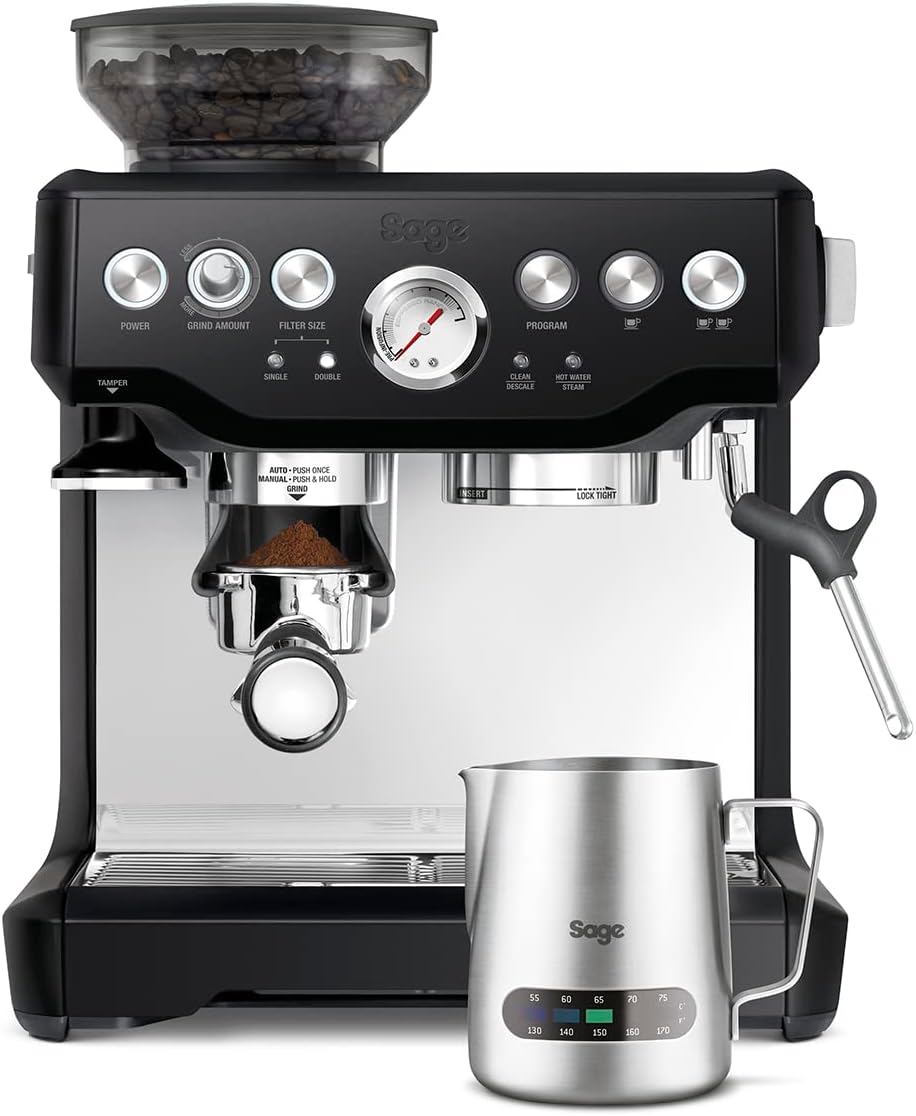
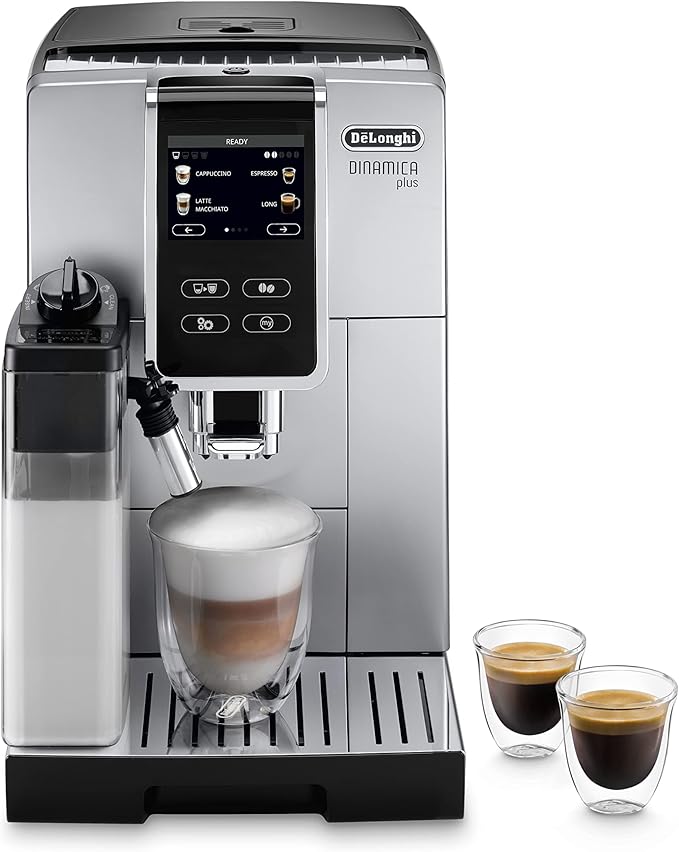
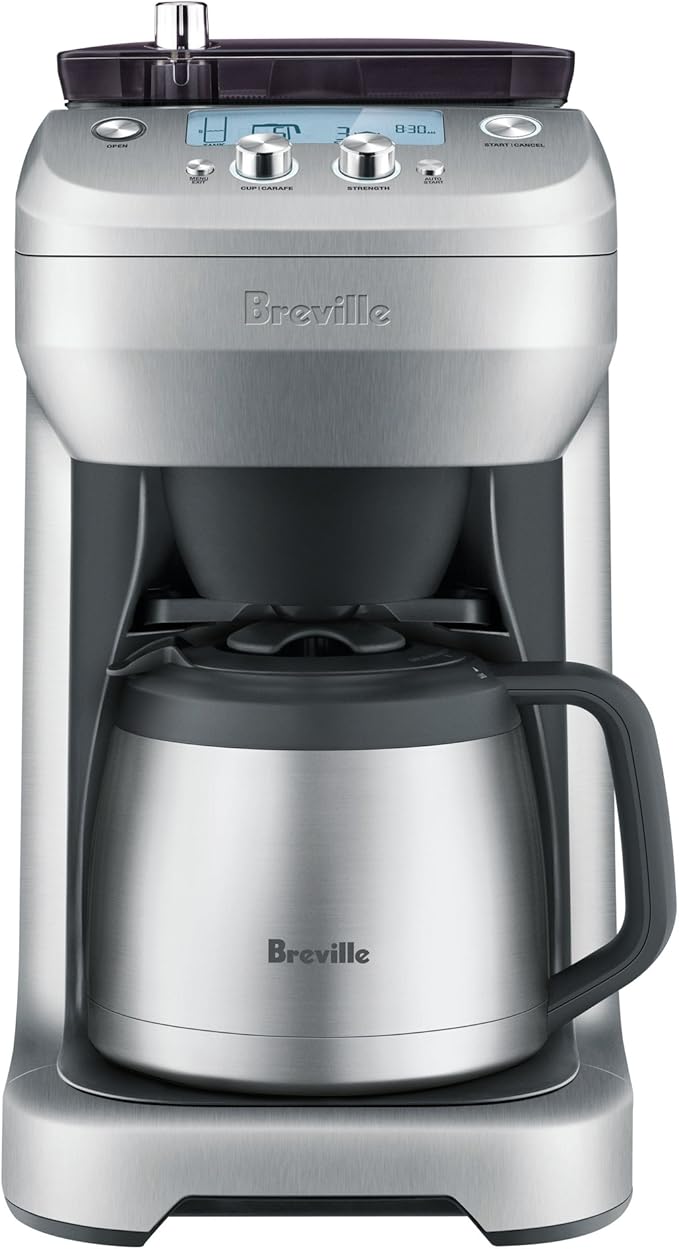
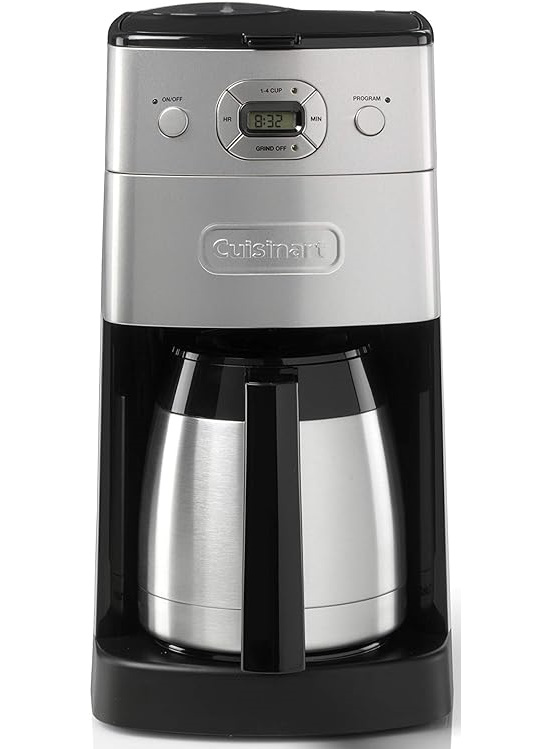
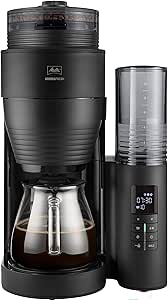
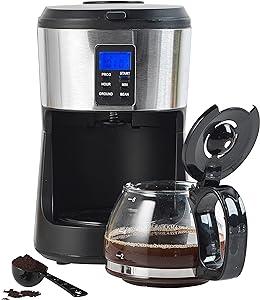
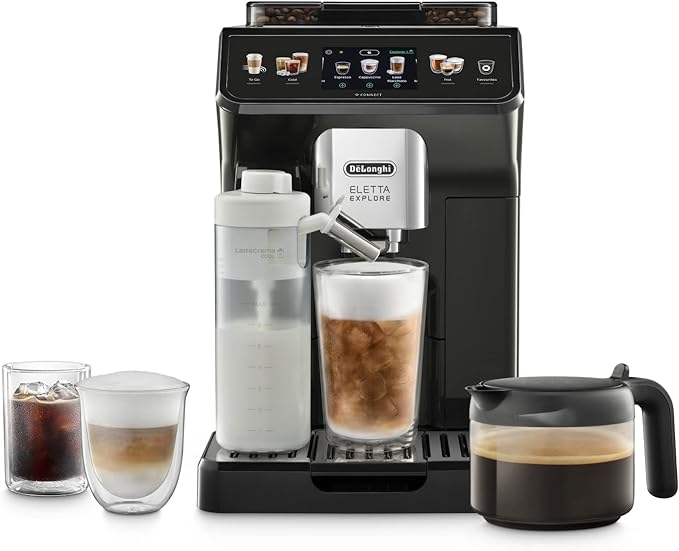




Joe Bloggs
Test